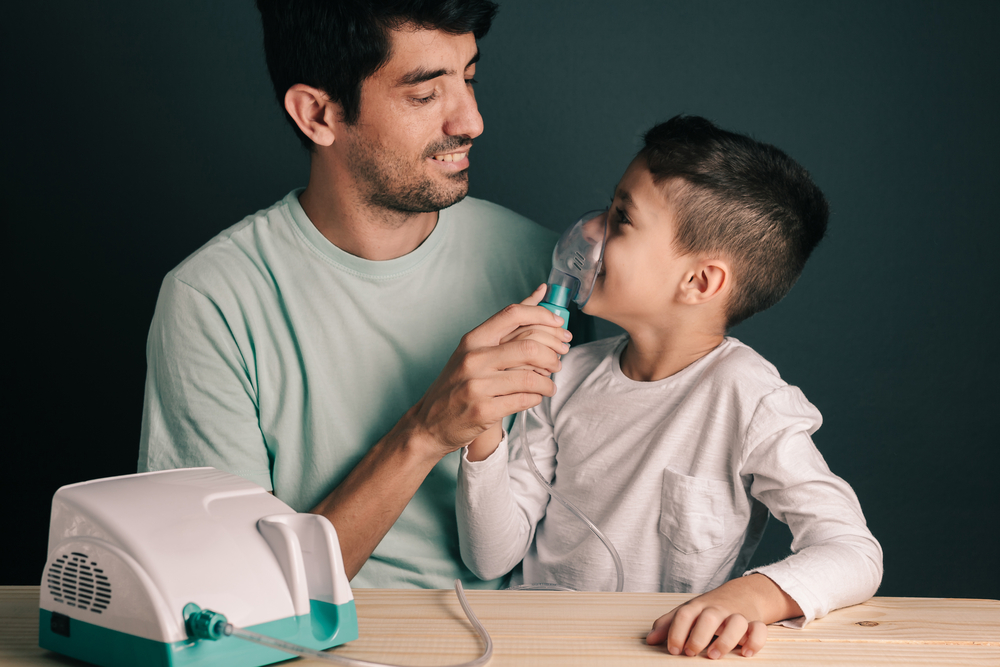What Is a Nebulizer?
Children's Health
•
Aug 10, 2018

Asthma is one of the most common diseases, with one in 12 people having the condition, according to the Centers for Disease Control. One commonly prescribed asthma treatment is a nebulizer. The device uses the same medications as metered-dose inhalers (MDIs), and can be used for short-term and long-term asthma therapy.
Nebulizers can be more helpful than MDIs for some patients because they do not require deep breathing to be effective. Infants, young children and people prone to severe asthma attacks, for instance, often find medication from a nebulizer easier to inhale.
Nebulizers come in portable and tabletop varieties. Tabletop nebulizers are large and plug into a wall, while portable versions are about the size of a deck of cards, run on batteries or can be plugged into a car cigarette lighter.
How Does a Nebulizer Work?
Jet nebulizers, sometimes called atomizers, are the most common type. They include many components, including:
- Base
- Air compressor
- Nebulizer cup
- Mask or mouthpiece
- Liquid medication
- Compressor tubing
The air compressor releases pressurized oxygen into the compressor tubing and sends it through the liquid at a high velocity. This “atomizes” the liquid, converting it into an aerosol, which is then inhaled by the patient through the mask or mouthpiece.
Benefits of Using a Nebulizer
Asthma attacks cause the airway to become very narrow, making it highly difficult to take full breaths. For people who have issues using an MDI, passively inhaling the medicated mist from a nebulizer is easier, especially during an asthma attack. Nebulizers can also administer multiple medications at once in larger doses than MDIs, which is helpful for individuals with severe asthma.
How Do I Use a Nebulizer?
How you use your nebulizer will depend on your doctor’s instructions and the type of medication and device you are prescribed. In general, you will follow these steps:
- Set the base on a sturdy, flat surface
- Confirm the components are sterile
- Wash your hands with soap and water
- Prepare the liquid medication if it is not premeasured
- Place the liquid in the cup
- Turn compressor on and look for mist to confirm it is working
- Attach the mask or mouthpiece
- Sit straight up, and take slow, deep breaths
- Continue the treatment until the dose is finished
Nebulizer Maintenance
Your nebulizer must be cleaned regularly to prevent contamination. The process is simple – the nebulizer cup and mouthpiece/mask should be removed and washed in warm, soapy water and air-dried after each treatment. The pieces can be reconnected to the device after they dry. The tubing does not need to be cleaned but it should be replaced every so often.
It is recommended you disinfect your device every few days. This involves removing the cup and mouthpiece and soaking them in a solution that is one part vinegar and one part water for 20 minutes. Shake off the remaining water and allow the pieces to air-dry on a towel before reattaching.
When storing, simply drape a clean cloth over the entire device, wipe away dust and debris as needed and put away your medication as directed – usually in the refrigerator.
Visit Complete Care for All Your Medical Needs
A nebulizer can help ease asthma symptoms and provide speedy relief during an asthma attack. However, if you are not near your nebulizer, you will need to seek immediate, professional medical attention. Complete Care’s emergency and urgent care facilities provide expert care without the long waits commonly found at hospitals.
We have locations in Colorado Springs and throughout Texas so you can rest assured there is a Complete Care near you. Find your nearest ER or urgent care location today!
